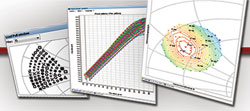
The consolidation of industry players and an overall reduction in acceptable time-to-market have led to demands for streamlined and efficient measurement and modeling device characterization tools. Maury Microwave and strategic partner AMCAD Engineering have addressed this challenge by releasing revision 3.5 of the IVCAD measurement and modeling device characterization software, the most complete commercial solution to cover the design flow from component to circuit to system.
Compact Transistor Modeling
The design flow begins with linear and nonlinear model extraction of popular transistor technologies, such as GaN FET and LDMOS. IVCAD, using AMCAD’s BILT pulsed IV system and a pulsed network analyzer (see Figure 1), measures synchronized pulsed IV and pulsed S-parameter characteristics at various gate and drain bias voltages. Pulse widths are set to eliminate self-heating and operate the transistor at quasi-isothermal conditions. The quiescent gate and drain voltages are set to isolate and model gate-lag and drain-lag trapping. Measurements can be repeated at varying chuck temperatures to extract an electrothermal model component.
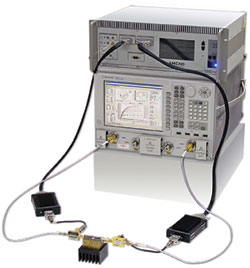
Figure 1 BILT/IVCAD pulsed IV/S-parameter characterization system.
AMCAD GaN HEMT and LDMOS model extraction is performed within the IVCAD platform; the same tool used to record relevant measurements is also used to extract the complete compact model. The measured S-parameters are used to create a linear model consisting of extrinsic (i.e., pad capacitances, port metallization inductances, port ohmic resistances) and intrinsic (i.e., channel capacitances, ohmic resistances, mutual inductance, output capacitance and resistance) parameters (see Figure 2). Synchronizing the pulsed IV and pulsed S-parameter measurements enables the nonlinear capacitances, voltage-controlled output current source, diodes, breakdown generator, thermal and trapping elements to be extracted.
Load-Pull MEASUREMENT AND MODELING
Load-pull measurement involves varying the load impedance presented to a device under test (DUT) at one or more frequencies and measuring its performance: output power at the fundamental and harmonic frequencies, gain, efficiency, and intermodulation distortion (see Figure 3). Load-pull characterization supports extracting and validating models, designing amplifiers, testing performance with mismatch, and evaluating robustness.
Once a nonlinear compact model has been extracted, load-pull can refine the model by adjusting the nonlinear parameters to better match nonlinear measurements. Load-pull can also be used to validate models by overlaying the simulated and measured transistor performance as a function of the load impedance presented to the transistor.
IVCAD supports multiple forms of real time, vector network analyzer (VNA) load-pull:
- CW and pulsed
- Single and two-tone input signals
- Fundamental and harmonic impedance control of the source and load
- Passive, active and hybrid-active impedance generation techniques
- Time domain waveform nonlinear VNA (NVNA) load-pull, under DC and pulsed bias stimulus.
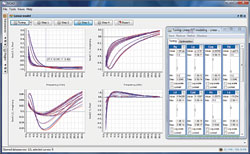
Figure 2 Linear model extraction tool.
Passive load-pull uses mechanical impedance tuners to vary the source and load impedances presented to the DUT at the fundamental and/or harmonic frequencies. Active load-pull replaces the passive tuners at one or more frequencies with “active tuners” that use a magnitude and phase-controllable source to inject power into the output of the DUT. This creates the “reflection” signal to present the desired impedance. Active load-pull overcomes the mechanical and VSWR challenges presented by harmonic passive tuners. Hybrid-active load-pull combines the strengths of active and passive load- pull, allowing the passive tuner to act as a prematch to lower the power required by the active tuner. Combining the two also enables a “divide and conquer” approach to covering multiple frequencies.
Time-domain NVNA load-pull can record the voltage and current waveforms and load lines as well as the typical measurement parameters. This additional information conveys the sensitivity of a transistor and its class of operation.
Synchronized pulsed RF, pulsed bias load-pull uses the BILT pulsed IV system to bias the DUT for a true pulsed measurement. Pulsing the bias avoids self-heating the transistor, and it is useful for MMIC applications where the bias is pulsed.
Behavioral Modeling
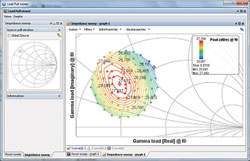
Figure 3 Load-pull contours.
Behavioral modeling yields a “black-box” that models the DUT’s response to a specific set of stimuli, such as input power, bias, and impedance. Compared with compact models, which completely define the characteristics of the transistor, behavioral models reflect the “behavior” and are static, meaning they are only valid under the conditions in which they were extracted. Behavioral models are useful in several applications:
- Hiding the details of the transistor and concentrating on its performance and response, which is ideal for public distribution
- Improving the speed of simulation, since behavioral models will generally simulate faster than a compact model containing the same data
- Modeling a packaged component or even a complete circuit or system, which is not compatible with compact modeling.
IVCAD supports two behavioral modeling methodologies: Keysight’s X-parameters and AMCAD’s Multi-Harmonic Volterra (MHV). X-parameters are the result of a polyharmonic distortion methodology (harmonic superposition), which uses harmonic extraction tones to quantify the harmonic nonlinearities of a DUT. The MHV modeling technique is based on harmonic superposition with dynamic Volterra theory, resulting in a model that handles both low and high frequency memory effects.
Behavioral modeling within IVCAD is transparent to the user. Sweep plans for impedance, power and bias are defined, and the measurement data is taken; the software communicates with the relevant model extraction application and presents a complete model following the measurement.
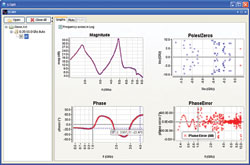
Figure 4 MMIC stability analysis.
Stability Analysis
Once an amplifier or integrated circuit has been designed with a circuit simulator, it is critical to test the design for both low and high frequency oscillations. IVCAD offers a Stability Analysis (STAN) module that is compatible with commercial circuit simulation tools (see Figure 4). Single and multi-node analysis determines the cause and localization of oscillations. Parametric analysis identifies potential oscillations as a function of input power, bias, load impedance and stabilization network resistance. Monte Carlo analysis characterizes oscillations as a function of manufacturing dispersions and tolerances.
Whether being used for a single purpose or across multiple modeling, design and production groups, the IVCAD measurement and modeling device characterization software suite offers an intuitive, methodical and efficient set of tools to help designers achieve first-pass design success and shorten time-to-market.
Maury Microwave
Ontario, Calif.
www.maurymw.com
